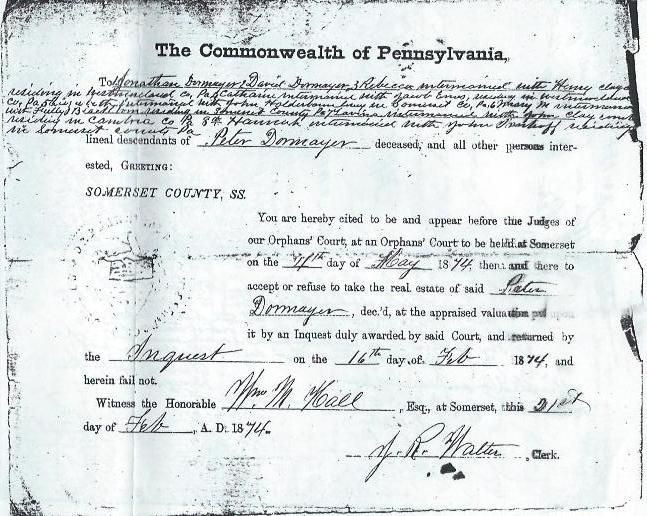Rifle by Peter Dormayer. The collectors refer to him as Dunmeyer with many different spellings. This rifle resided in a small collection in the York, PA area for many years. It came to that collection from a barn sale in York. I found it at the Baltimore gun show in 2006. As you can readily see from the pictures it is a very typical Bedford rifle.
The overall length is 57 ½ inches. The barrel is 42 ½ inches. Caliber is 40. The butt plate top to bottom is 4 ½ inches and the nose cap is 2 ¼ inches long. If a line is extended from the to of the barrel, the drop to the top of the butt plate would be 5 ¾ inches.
This rifle is very similar to the one in plate 136 of Calvin Hetrick's booklet "The Bedford County Rifle and Its Makers", published by George Shumway. It verifies Shumway's assumption on who made the rifle in plate 136.
While most of the photos are self explanatory there are a few items I would like to make the reviewers aware of. There appears that there has been a repair at the front of the stock which starts about 8 ½ inches back from the front of the nose cap. It is virtually unnoticeable from the right side but is more obvious when looking at the ram rod channel with the ram rod removed. Even then the wood appears to be the same age and could be original to the piece. The Dormayers were known to use an open end lug to hold their barrels in place. To remove the barrel you would remove the screw from the tang, lift slightly and slide the barrel forward. Such a lug required slots of about 1 inch at the pin locations. The barrel on this rifle has the open end lugs. All of the slots in the stock including the one on the repair area appear to have the same amount of wear. There is another repair to the stock in the area of the lock plate which is poorly done and obviously not by whoever repaired the front of the stock.
I can find no markings on the barrel. There is no sign of any identifying markings on the lock plate which appears to be hand made. The shape of the lock plate is similar to the one on the rifle in plate 136 of the Hetrick booklet mentioned earlier. There is relief carving on the cheek side of the stock, around the tang, and at the area of the rear ram rod pipe.

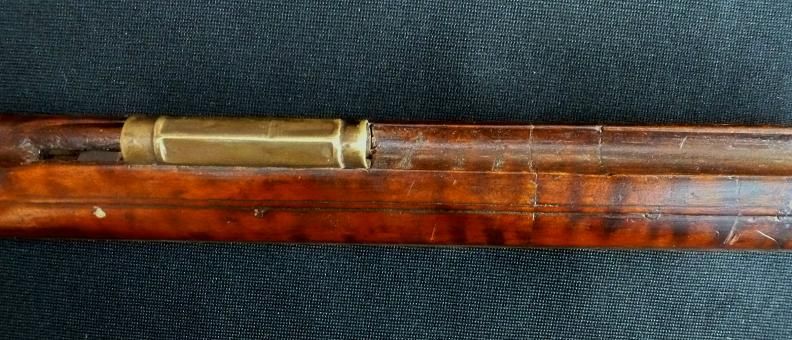
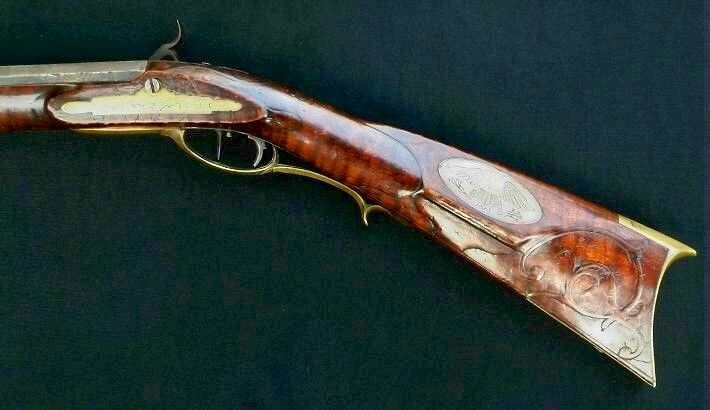
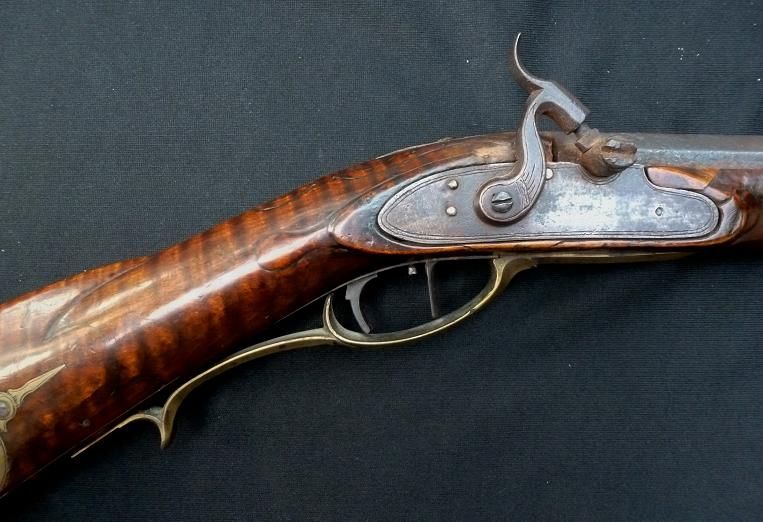
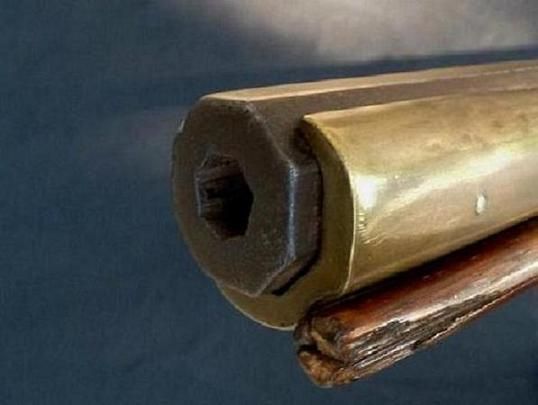




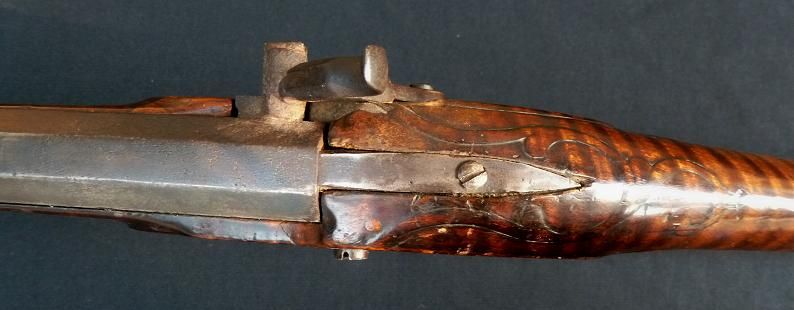
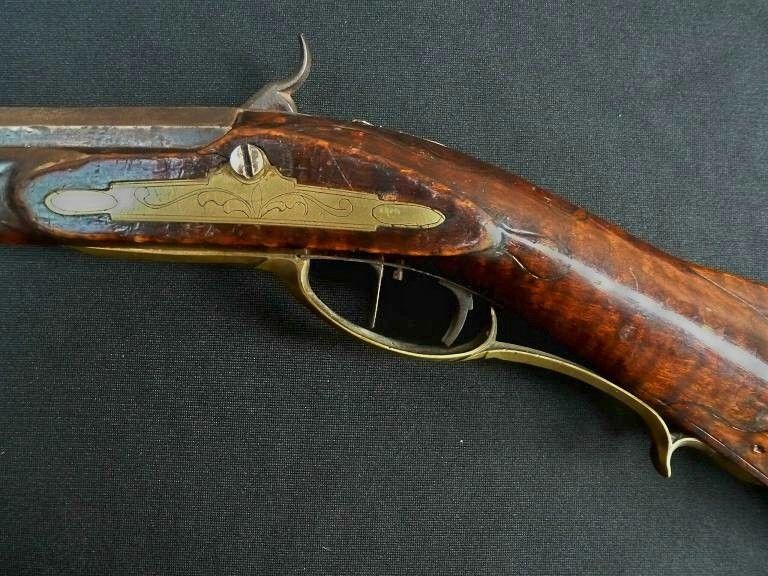


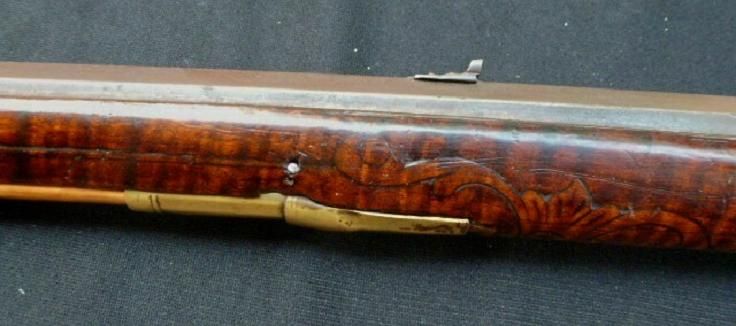
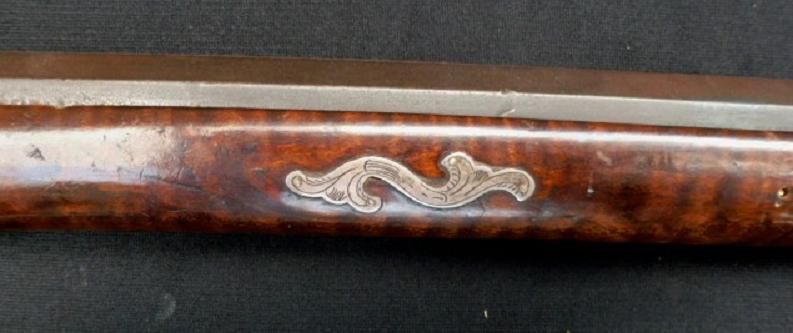
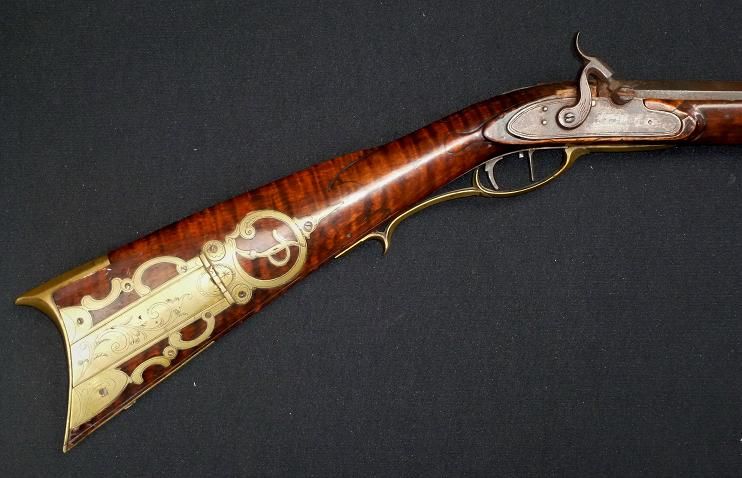
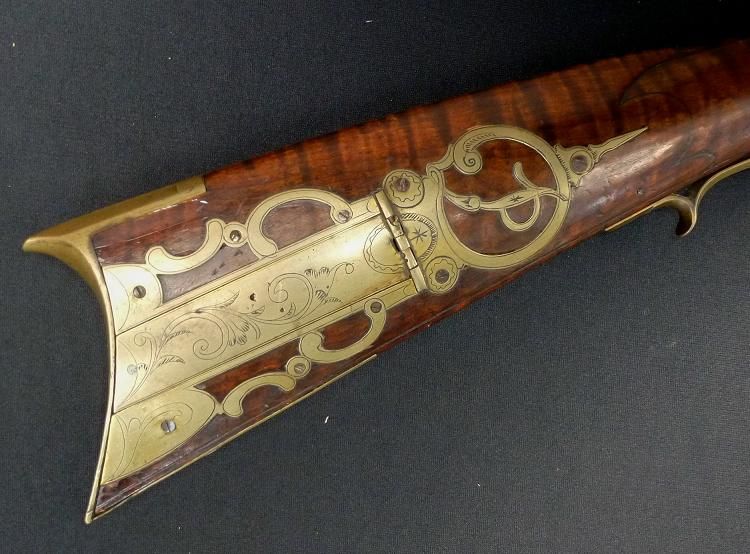

===================================================================
Historical Notes:
The Dormayers were one of the most prolific gun makers in Somerset County from the late 1830s into the 1880s. While production by the immediate family probably ended with Jonathan's death in 1884, his nephew C. M. Knupp continued to make examples of the Dunmeyer Somerset rifle into the early 1900s.
Young Peter Dormayer (who became a Gunsmith) came to Cambria County when his father, also named Peter, moved the family there from Center County around 1805. Peter Junior was about 10 years old. At the time of the 1820 census young Peter, about 25 years old, is married, living in his own home in Conemaugh TWP, Cambria County, and is listed as a manufacturer. He is not listed on the census rolls by his correct name but as "Dunmire, Peter Jr". Throughout his life only the 1830 census comes close to correct, listing him as Dormyer. His son Jonathan was never listed correctly on the census during his lifetime. Instead they were listed as Dunmire with five different spelling variations. To this day their rifles still are called Dunmeyer rifles with at least five different spellings. Tax records similarly spell the name incorrectly. Court records and military records list Peter and Jonathan correctly as "Dormayer", some contain Jonathan's signature which is always "Jonathan Dormayer". Family records list them as Dormayer and Jonathan's grave is marked with Dormayer. I have seen one rifle with "J. Dunmeyer" in script on the barrel. It does not match his signature, but the rifle is unmistakably his family's work. Kauffman also writes of rifles with "Dunmeyer" on the barrel. (I have attached some official documents or items that verify Peter and Jonathan's use of the name Dormayer)
Peter had only two sons Jonathan and David. Jonathan sired only daughters thus there were no sons in his line to carry the name "Dormayer" further. David was illiterate, signed documents with an "X", and accepted the name Dunmire with a variety of spellings. David had sons and they came to use the name Dunmire with its many spellings. Thus there are current "Dunmires (with many different spellings) who may be direct descendants of Peter but not Jonathan.
Because for many years they have been established as such, I don't have a problem referring to the rifles as "Dunmeyer" rifles. However, when I have to refer to the gunsmiths who made them, it is difficult to not use their correct name since Peter and Jonathan held that name throughout their lives.
Not too many years ago when only one known rifle had been attributed to Peter, it was believed that he may have developed his skills in association with J. Pringle of Cambria County. It is not known if the "J. Pringle" appearing on some rifles pertains to Jacob or John Pringle both of whom were Cambria County gunsmiths. Indeed J. Pringle's work was similar to that first rifle attributed to Peter and possibly future information may more firmly connect Peter's early development as a gunsmith with the Pringles. Pringle's work was also very similar to the rifles being made in Bedford County and it is there that Peter's skills were honed during apparent associations with Jacob Stoudenour, John Amos, Thomas Oldham, and others of the Bedford School. In 1834-35 Peter was on the tax rolls of Bedford County's Union TWP. The five known rifles made by Peter reflect the Bedford profile. Two of those rifles can be viewed in the Whisker & Yantz book "Gunsmiths of Bedford, Fulton, Huntingdon, & Somerset Counties" on pages 89 and 116. Another is included in chapter twenty one of the fourth edition of "The Kentucky Rifle" by Dillin published in 1959. That chapter entitled "The Bedford County Rifle and its Makers" was written by Calvin Hetrick who said this about the then unidentified rifle on plate 136. "I cannot emphasize too highly the quality, grace and beauty of this exceptional rifle." In 1973 George Shumway published chapter twenty one of Dillin's fourth edition as a booklet and in that booklet he added this note to plate 136; "This rifle may have been made by a gunsmith named Dunmeyer in neighboring Somerset County. The patch box finial features the script initial 'D'". The finding of the similar Bedford Dunmeyer rifle shown below verified Shumway's notation.

Peter's known Bedford style rifles, except for the heavily inlayed one on page 116 of the Whisker book, all have a similar relief carved vine with a closed loop on the cheek side of the stock. A few of the other Bedford makers occasionally used the closed loop carving but not consistently as did Peter. Also on his Bedford rifles Peter varied the style of his lock bolt plates and patch box trim. Ironically, most of the other Bedford makers used pretty much the same style patch box trim, lock bolt plate, and carving on all but a few of their rifles
After Peter moved to Somerset County in the late 1830s it appears that he was working on developing a rifle that would retain some of the Bedford influence, but could still show enough individual variation that it would not be a Bedford copy. At least two nice examples of these transition rifles are known. One has an eagle plate on the cheek side of the stock with the initials PD on it. The other has J. Dunmeyer in script on the barrel though it appears to have some features that you might attribute to Peter. Both of these rifles have a butt plate that compares in size top to bottom to the Bedford rifles. The rise at the comb is not as distinct as four of Peter's Bedford rifles and both have barrels of about 40 inches. Both have the same carved pattern on the cheek side of the stock that Peter used on his Bedford rifles except the carving is incised and not in relief. Like his Bedford rifles both of these guns have different lock bolt plates and patch box trim. One of these transition rifles is shown below.

Shortly after the move to Somerset in the late 1830s it is assumed that he began training his oldest son Jonathan. "J. Dunmeyer" appears in script on the above rifle. In the period between 1840 and 1850 there emerged the Dunmeyer Somerset rifle. Earlier, before the transition rifles surfaced, it was assumed that Peter had made only Bedford style rifles and that the Somerset style rifles were all the work of Jonathan. Since Peter was a Gunsmith until his death in 1873 and considering the small number of his Bedford style rifles that have surfaced, it may be safe to conclude that he and Jonathan and to a lesser extent David were at times all involved in the production of the Somerset rifles. Jonathan lost a leg in the civil war requiring David, who was also badly wounded, to become more involved in making the rifles. Jonathan's wounds led to his demise in 1885 at the age of 58. David survived until 1913 though greatly hampered by his injuries.
Aside from occasionally seeing some rather primitive engraving on the patch box covers, very simple lock bolt plates, and longer barrels, the Dunmeyer Somerset rifles show little variation. Signed or unsigned they are easily recognized. The typical Somerset Dunmeyer will have a barrel length of around 36 inches and a total length of about 51 inches. It will have a very narrow stock at the shoulder with the butt plate measuring about 3 ¾ inches top to bottom. It will have an incised carving of a vine with a closed loop on the cheek side of the stock. On the other side of the stock is a Bedford style patch box with a vine (always similarly configured) engraved on the lid. There will also be incised carving in front of the cheek area, around the barrel tang, and in front of the patch box finial. Most of the time the Dunmeyer's Somerset rifle will have a handmade lock in the Bedford style sometimes with the initals "JD" in script. Commercial locks were occasionally used. Longer barrels are sometimes seen. There is nearly always a double line incised on each side of the stock from behind the nose cap to just above the rear ramrod pipe. At that point the lines will always end with a closed oval and a squiggly tail. That same feature appears on some rifles by J. Pringle, Jacob Stoudenour, and other Western Pennsylvania gunsmiths. Judging from Peter's varied creativity on his Bedford rifles; one would assume that the utilization of the shorter barrel, a stock of a consistent profile, incised carving and other efficiencies were instigated by Jonathan to enhance production.

A typical Dunmeyer Somerset Rifle though the barrel has been shortened.
A gentleman who is currently, and has been for many years, a gunsmith in Bedford County told of a feature he has seen on many Dunmeyer rifles that he had not seen on the rifles of other Somerset gunsmiths. He said that the barrels are held by lugs that have an open end. To take off the barrel you would remove the screw in the tang, and slide the barrel forward slightly and lift it. An inquiry to the ALR site revealed that there are other makers who have used this feature though it doesn't appear to be very common. This type of lug requires slots of about one inch long where the lugs are inserted in the stock. See the photos on the following page.
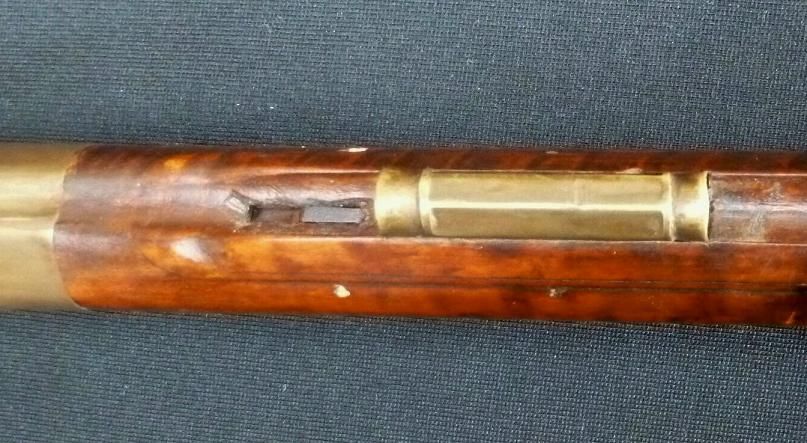

Below is Jonathan's grave marker at Pleasant Hill Cemetery in Somerset, PA. where he is buried beside his wife Barbara (Knupp) Dormayer. There are several of his daughters buried near by.
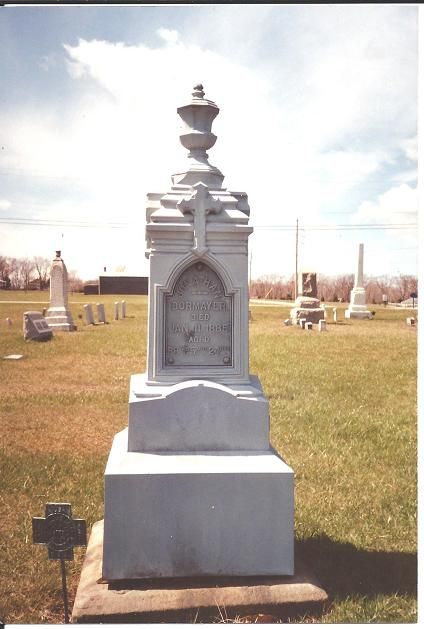
Following are some legal documents that attest to the fact that the Jonathan and
Peter had not changed their name from Dormayer. Further at the time the document was processed it is noted in the first paragraph that David's name was also considered by his brother and sisters to be Dormayer. Jonathan's signature is
in two places on the last page.


